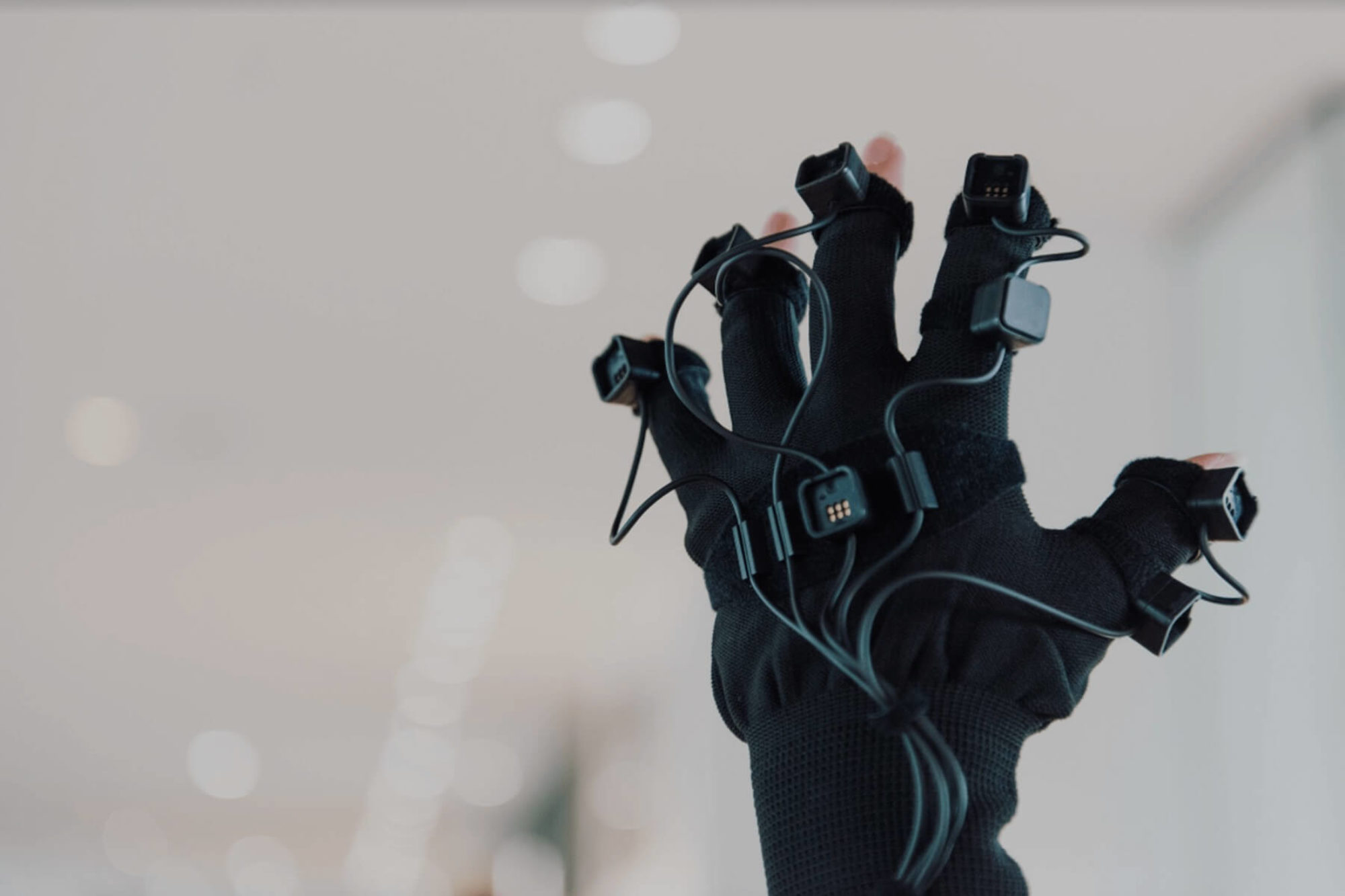Haptics and its impact on the future of immersive experiences
Posted 7 Feb 2020
What separates the real from the virtual world is the way in which our senses engage. We might be able to see or hear the virtual world, but how do we taste, smell, or feel? That’s where haptics comes in. Haptic technology gives us the ability to sense the virtual world in ways that go beyond the usual experience in a virtual or augmented reality headset.
What is haptics?
Haptic technology, also known as kinaesthetic communication or 3D touch, is the use of electronically or mechanically generated movement that a user experiences through the sense of touch as part of an interface.
Haptic technology was first made mainstream in 1976 with Sega’s Moto-Cross that incorporated feedback in the joystick which would vibrate when the player crashed the bike or drove over rough sides of the road. It allowed the player to understand the consequences of actions on a sensory level beyond the audio or visual stimulus of the game.
In the gaming world, simple haptics are commonly experienced in the form of game controllers that amplify force feedback and vibrations. The upcoming generation of games consoles will include improved haptic feedback with the ability to feel the textures of the world a player is in, from running through blades of grass to kicking a football.
It isn’t just in video games that haptics is taking hold; since 1996 mobile phones have used haptic technology. With the rise of touchscreens, haptic technology has become an increasingly important part of how we interact with our digital lives, micro-vibrations replace the feeling of a button press, and pulses on our wrist from our digital watch can alert us to calls and messages.
So what does this all mean for haptic technology and the immersive world?
When experiencing immersive technology it’s amazing how quickly you buy into the virtual or augmented world you are being presented with. But the sense of realism presented by audio and visual can only go so far.
When you start to be able to feel the world around you, the impact of the experience is heightened.
Haptics for immersive technology can manifest in many ways, from wearable backpacks and vests that vibrate in time to audio allowing you to feel sound, to gloves and sleeves which manipulate our sense of the weight of virtual objects, or allow you to feel texture in the virtual world around you.
It doesn’t have to be a wearable either, Ultraleap’s Stratos Inspire shoots beams of ultrasound to allow you to feel digital worlds without the limitations of wearable technology.
How will interactions change through haptics?
In late 2019 Oculus introduced hand tracking to the Oculus Quest; this free update for all its existing headsets enabled Oculus to open up new ways of interacting with virtual worlds in the best way that we know… with our hands. At a talk during Oculus Connect 6, Oculus spoke about how this approach is influencing the design process – waving hands about in midair takes away from the immersion. However, considering design choices where hands are part of the feedback loop – such as pinching to select instead of air tapping, or adding buttons to a virtual wrist instead of a floating dashboard – adds what they call ‘bio haptics’, where the body provides the tactile feedback of a virtual button press.
Haptics can be used across many different industries, it’s not just entertainment and gaming that can benefit from the technology. Haptic technology is becoming more mainstream in the medical and manufacturing industries.
Imperial College London uses haptic technology to recreate the interactions between a clinician and the human body during medical examinations and surgical procedures to help train future practitioners and provide real-time feedback on training. Furthermore, Sweden’s Uppsala University and the Swedish University for Agricultural Sciences have been using haptics for the virtual assembly of complex objects which includes both skeletal anatomy and archaeological artefacts. By utilising haptics they look to achieve reconstruction without causing further damage.